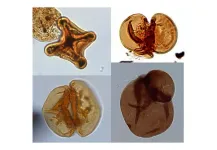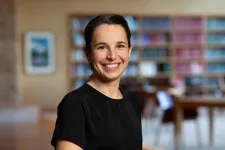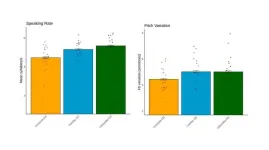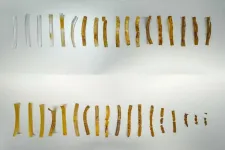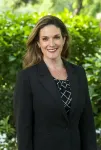The anecdote is a telling example, scientists say, of how thousands of field stations studying primates in forests around the world not only generate knowledge about these threatened species, but also contribute to biodiversity conservation by deterring poaching, deforestation and illegal extraction of natural resources.
The 17 species of red colobus monkey living across Africa, including in the Tai Project field station region, have been singled out by scientists in an April 30 Conservation Letters article as a priority conservation target. Protection of these monkeys, they assert, can be expected to produce benefits throughout tropical African forests where hunting and climate change have led to dramatic wildlife and habitat loss.
W. Scott McGraw, professor and chair of anthropology at The Ohio State University and co-director of the Tai Monkey Project operating out of the field station in Ivory Coast, is a co-author of the article – as well as of a companion Conservation Letters article published in March. The two papers call for scientific communities, governments and funding agencies to support red colobus conservation efforts and step up financial backing of research field stations.
“One of the primates at our field station is a red colobus species that is endangered,” McGraw said. “If we were to stop our work and pull out of the forest, I would not be surprised to see the numbers of all animals just crash. By simply being at the field station, we are protecting what we’re studying in addition to generating knowledge. Every one of those species of red colobus in Africa is in danger. And the places where they’re protected the most are those that have research field stations.”
The authors, from almost 20 institutions in the United States, Europe and Africa, focused on priority action areas that include national and international designation of red colobus as priority conservation species; ecological surveys to determine populations in need of protection; greater investment in protected area creation and management; and engaging with people who live in close proximity to red colobus monkeys.
The monkeys’ threatened status has already led to one likely extinction: McGraw was among a team of primatologists who documented the disappearance of a species called Miss Waldron’s red colobus in the late 1990s – the first primate to have gone extinct in 500 years.
“People would say, well, there are lots of other primates – who cares if we lose one? But we argued that this could be the beginning of a wave of extinction that could make its way across all of Africa,” McGraw said. “This was the tip of the iceberg suggesting we were on the edge of catastrophe. What’s next? Then the leopards go, then the hippos go.
“As sad as documenting the disappearance of a primate is, we hoped it would be the canary in the coal mine, if you will, and people would pay attention – for example, to what field stations do.”
Broadening understanding of field stations’ cost-effective protection of biodiversity resources was the point of the earlier article co-authored by McGraw and 172 other scientists. The paper outlined quantitative estimates of field station-related conservation of wildlife species and forests based on a survey of the leaders of 157 field stations in 56 countries.
The international effort was largely prompted by the COVID-19 pandemic’s heavy financial blow to research field stations, many of which haven’t recovered. Half of the station directors surveyed reported that in the four years since the lockdown began, their sites have been functioning with less – or much less – funding than they had in 2019. About one-quarter have remained partially or completely closed since the pandemic began.
“Most of these field stations are located in biodiversity hotspots, and operate at a relatively low cost,” McGraw said. “We work in a well-known national park, but every day we hear gunshots around us. We’ve collected good evidence over 30 years that the density of animals drops off dramatically immediately outside of our primary study area. So just by being there, we are affording protection.”
Most survey respondents reported that the presence of a field station staffed full-time – by institutional scientists and, in nearly every case, local employees – reduced hunting and improved enforcement of poaching laws in areas serving as habitats for over 1,200 threatened animal species. The authors estimated that each station has a direct biodiversity impact on almost 50 square miles of habitat around its physical site, and noted that more than half operate with annual budgets of less than $50,000.
Spatial analysis showed that forest cover loss was significantly lower near field stations, showing almost 18% less deforestation overall mainly driven by sites throughout Africa, where field stations’ presence is associated with 22% less deforestation.
McGraw and his colleagues have seen the risks to protected lands and field stations’ conservation impact firsthand. The worldwide demand for chocolate has made cocoa an extremely valuable plant, and some residents in Ivory Coast – the largest producer of cocoa beans – have turned protected areas into illegal cocoa farms and hunting grounds.
Ivory Coast researchers, including McGraw, found that patrolling the grounds of two forest reserves helped reduce illegal activity by well more than half between 2012 and 2016. The team had previously reported, almost 10 years ago, that 75% of land in 23 protected areas had been transformed into cocoa production – and the loss of forest habitat led to dramatic decreases in primate populations.
“In the eastern part of Ivory Coast, where there should be forest, it looks like a bomb has dropped,” McGraw said. “So much of the forest has been cut down, and that which remains is under increasing pressure from us. The human population growth is so steep and is taking place in areas often containing the largest number of threatened taxa. People are, in many cases, eking out a living right next to a forest containing biodiversity that they’ve grown up with.
“It’s a real conservation crisis.”
#
Contact: W. Scott McGraw, McGraw.43@osu.edu
Written by Emily Caldwell, Caldwell.151@osu.edu
END
